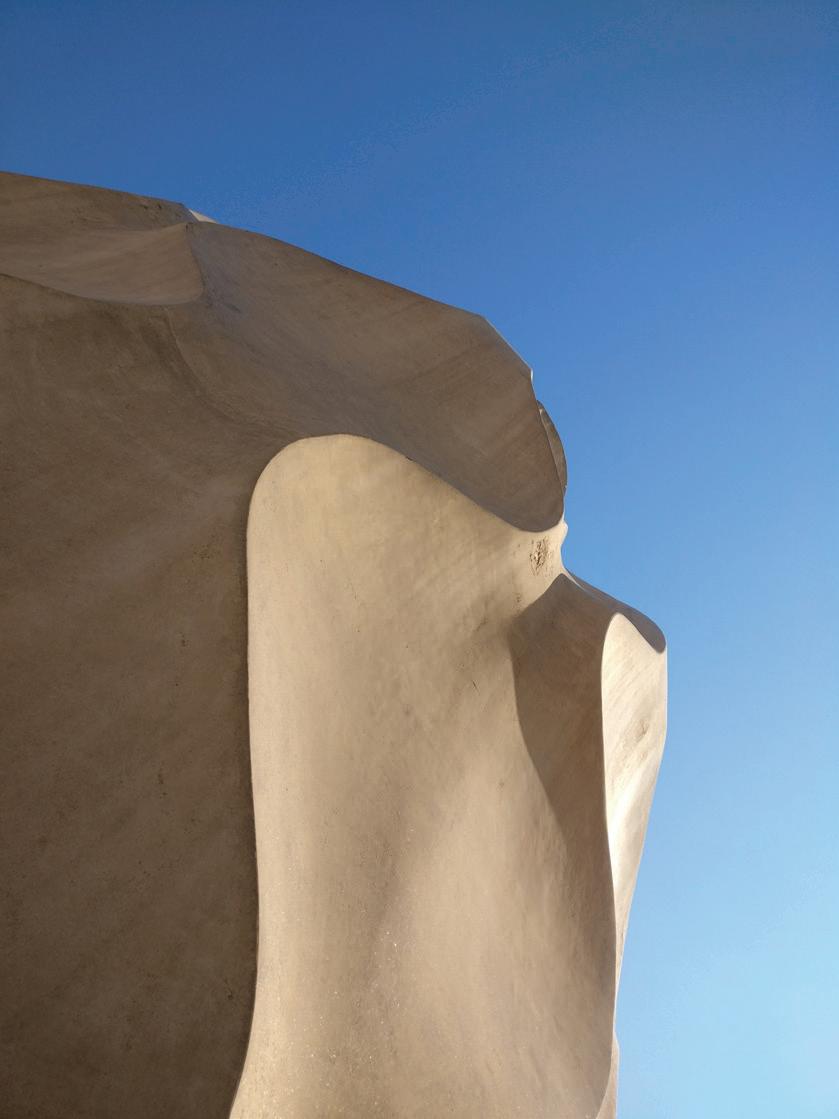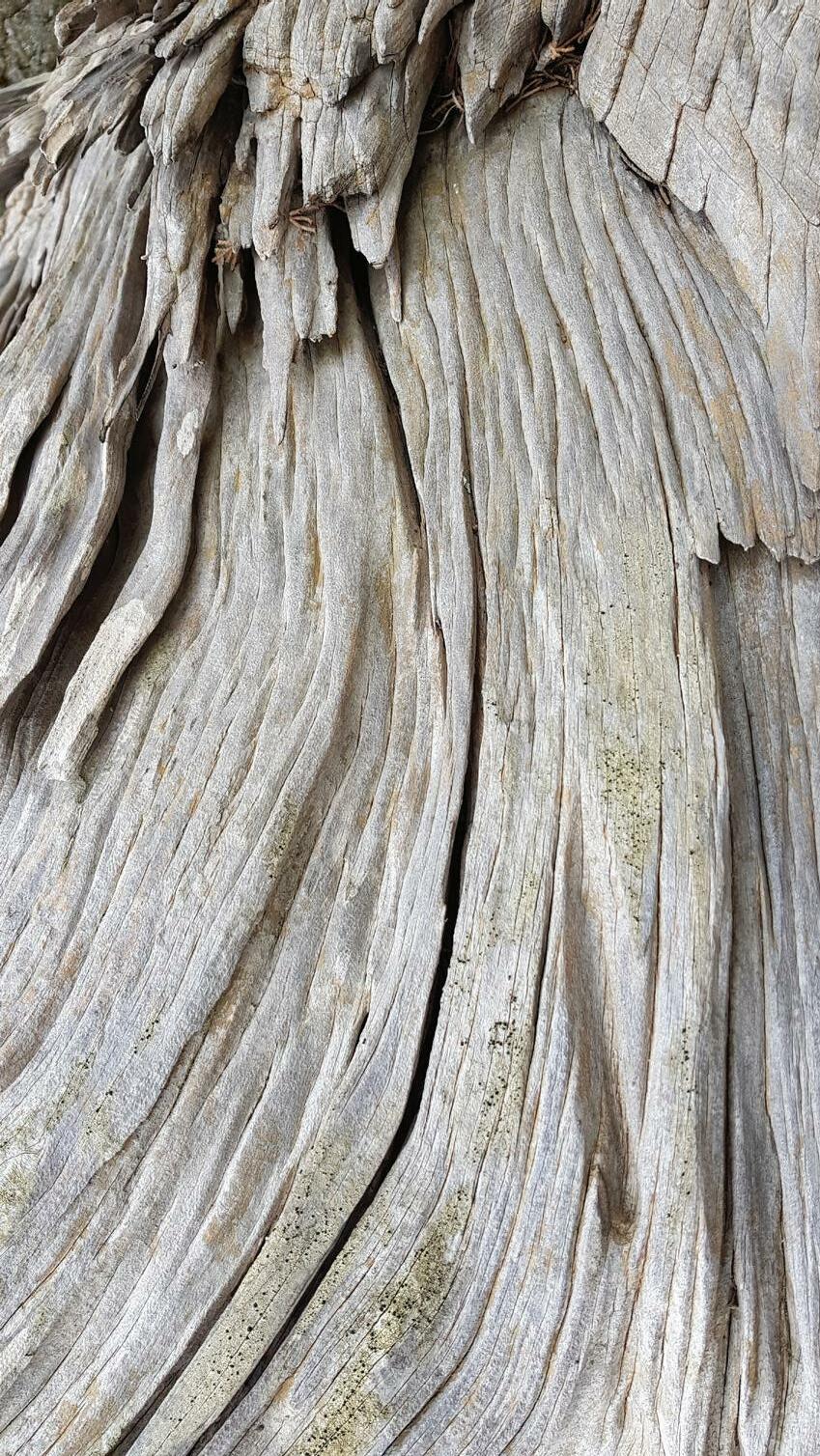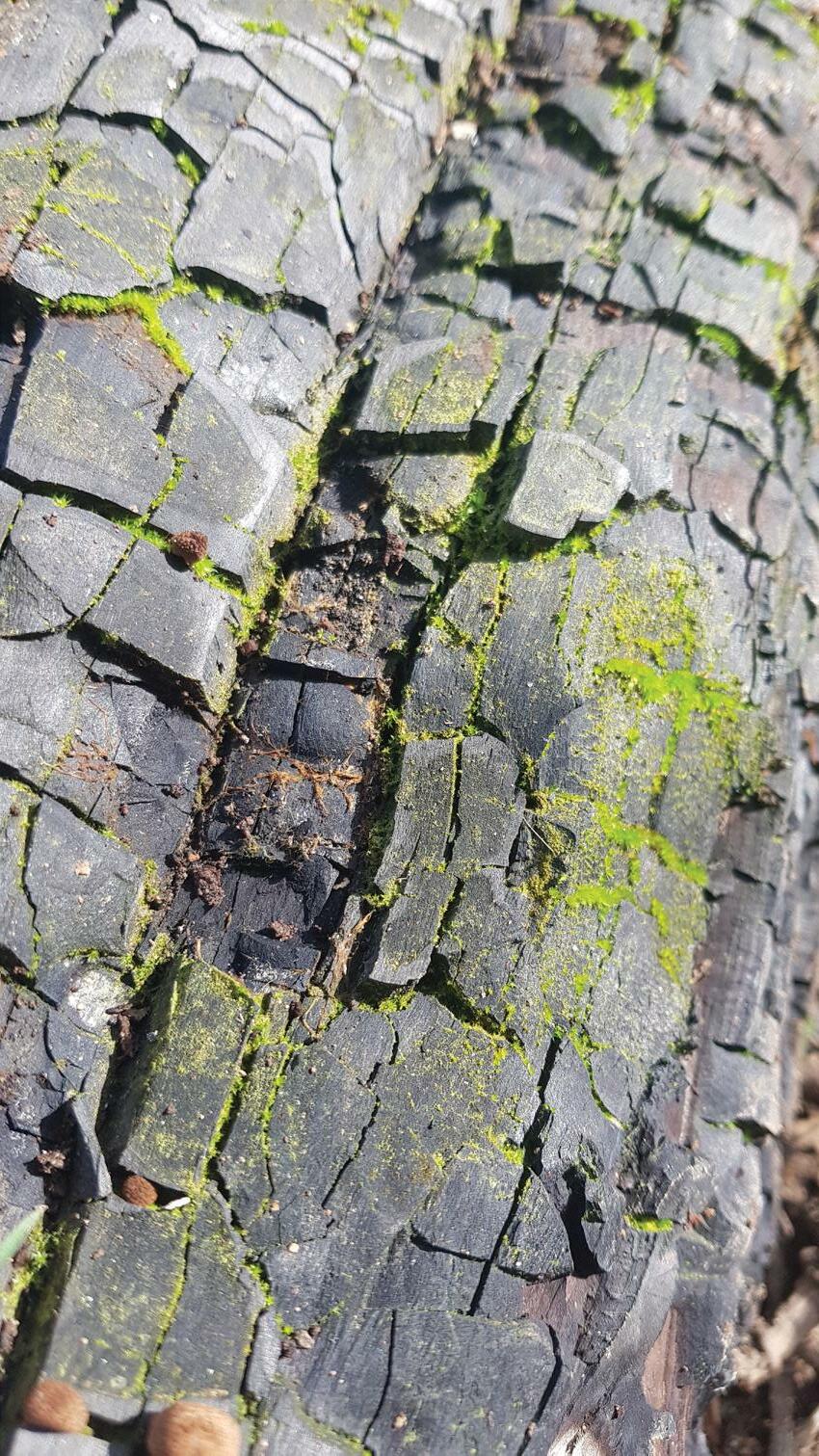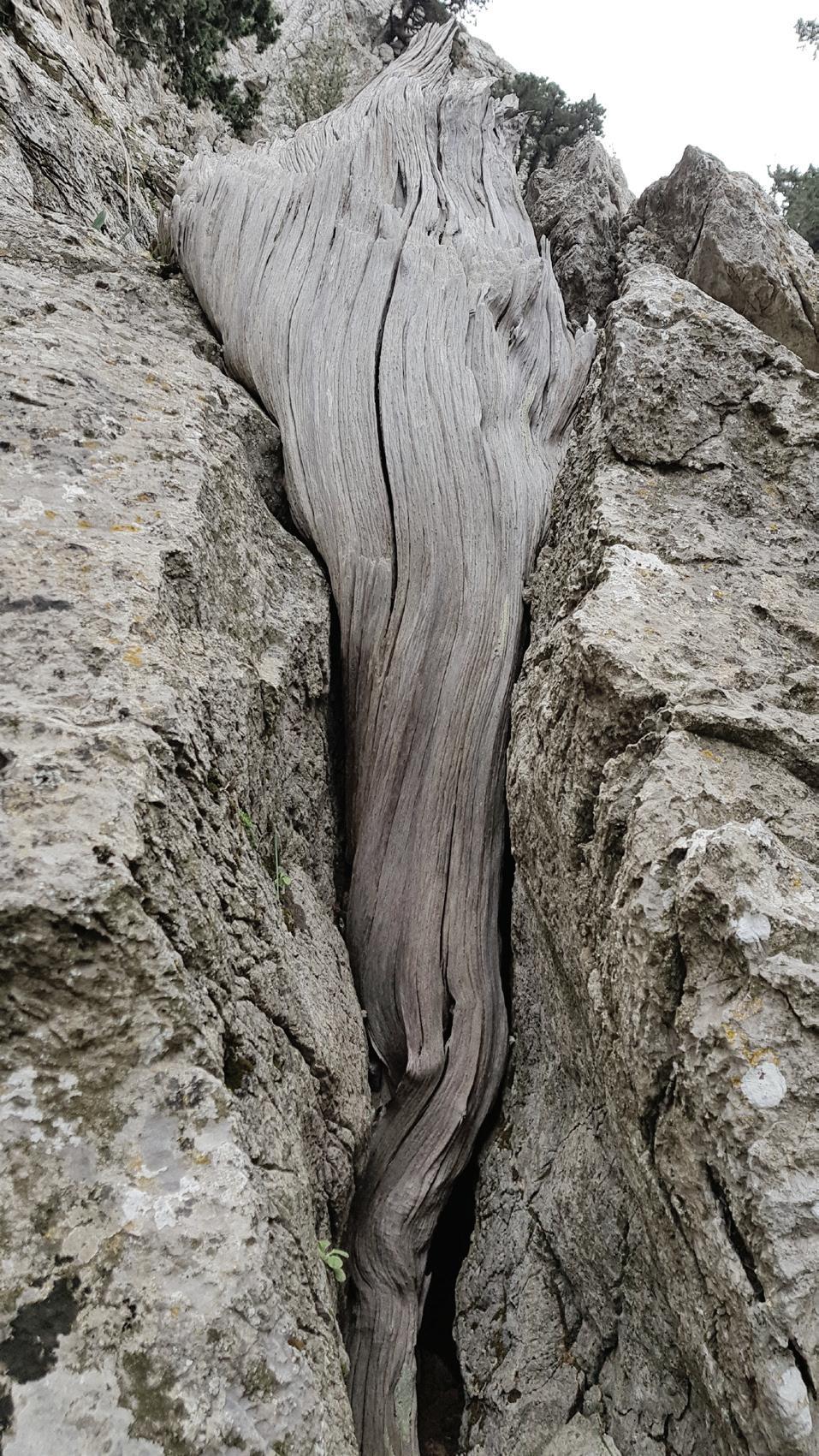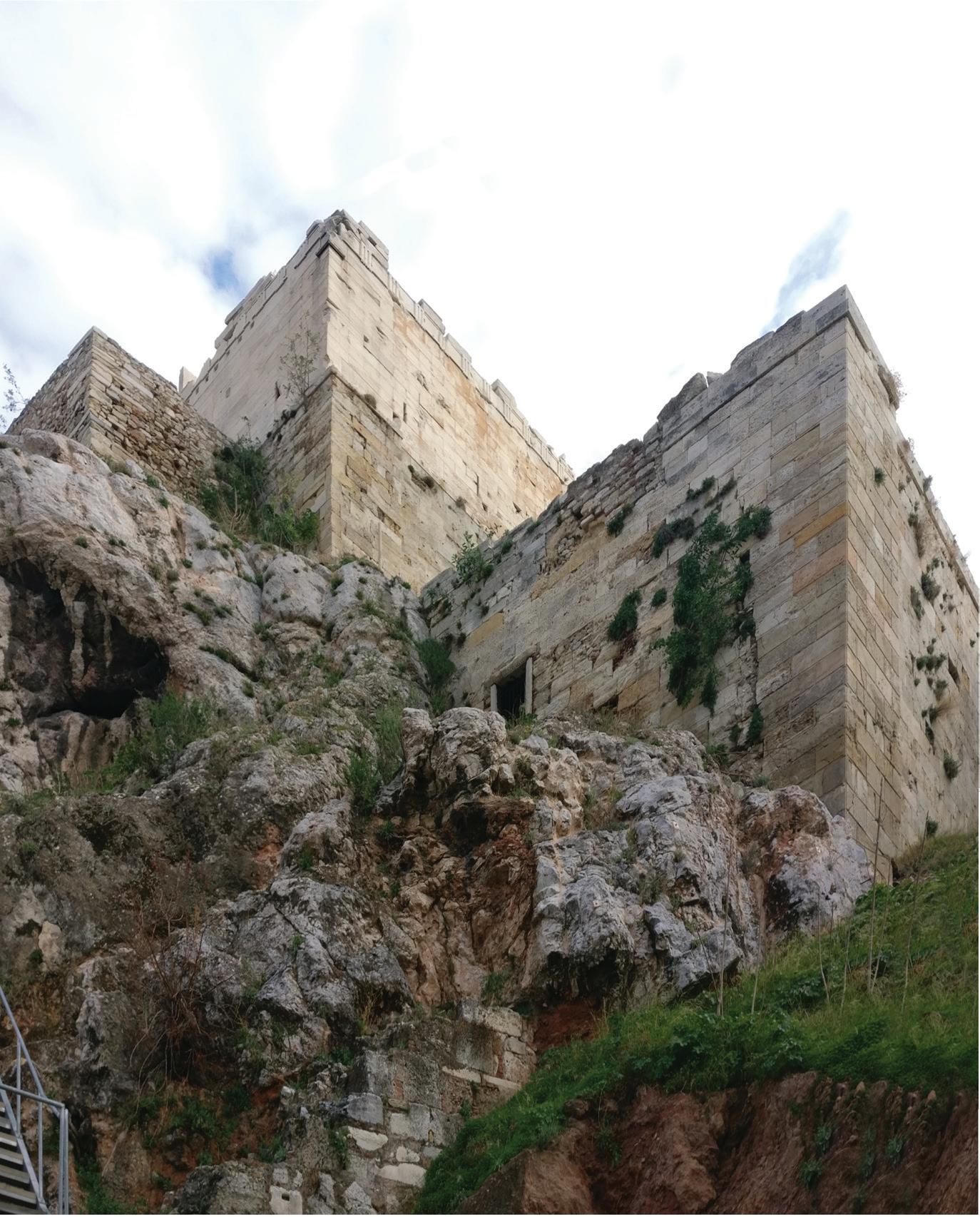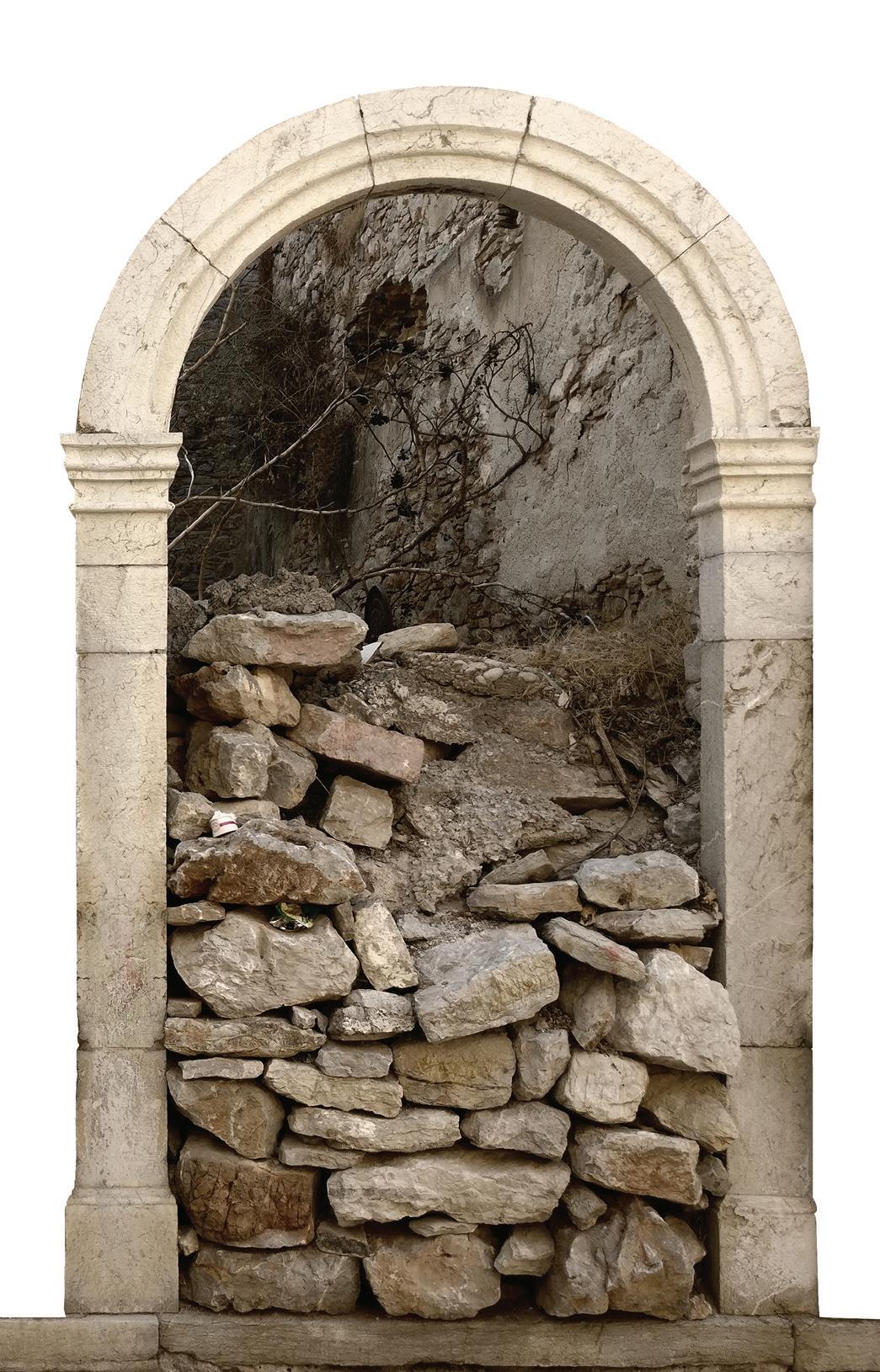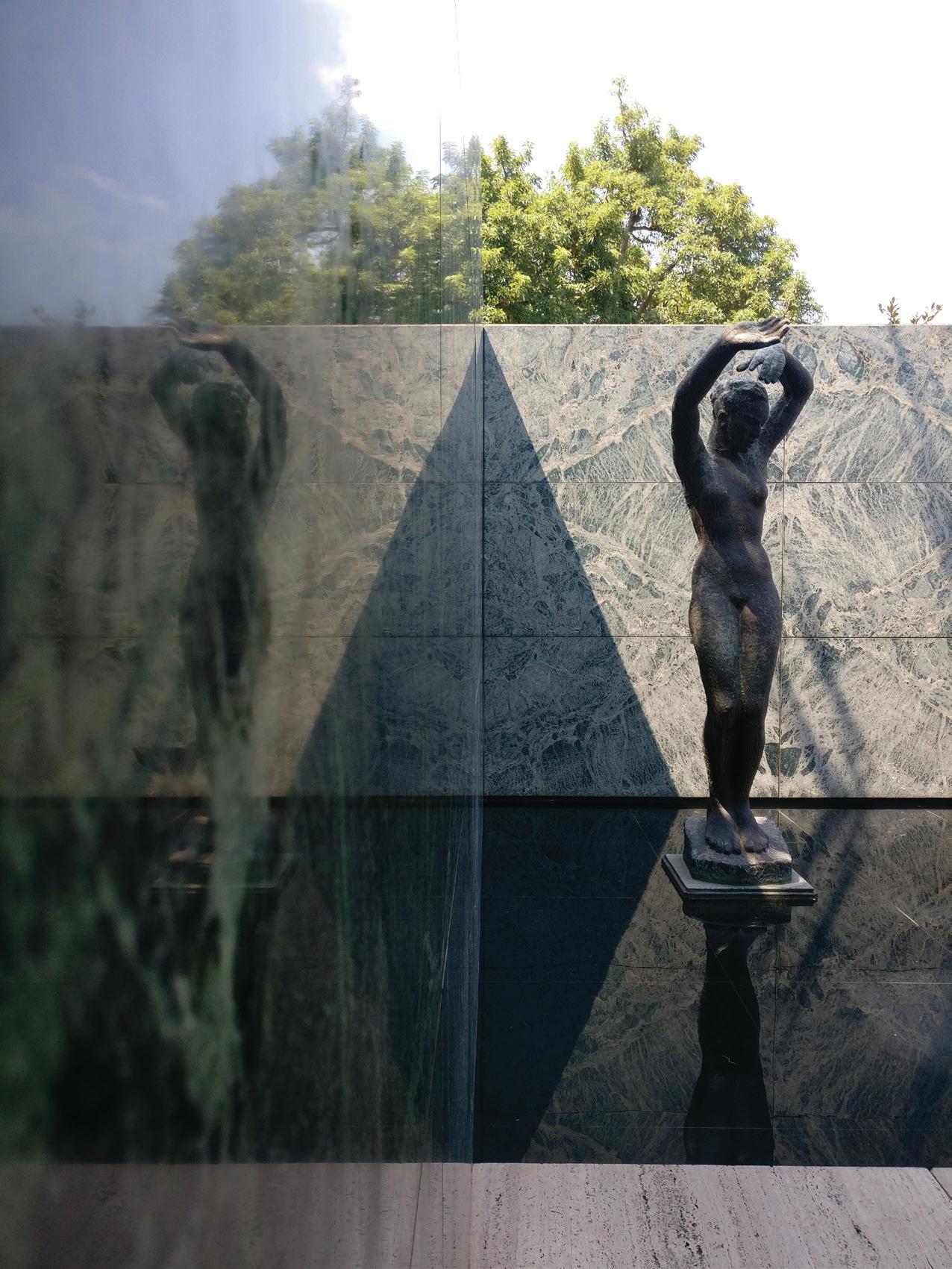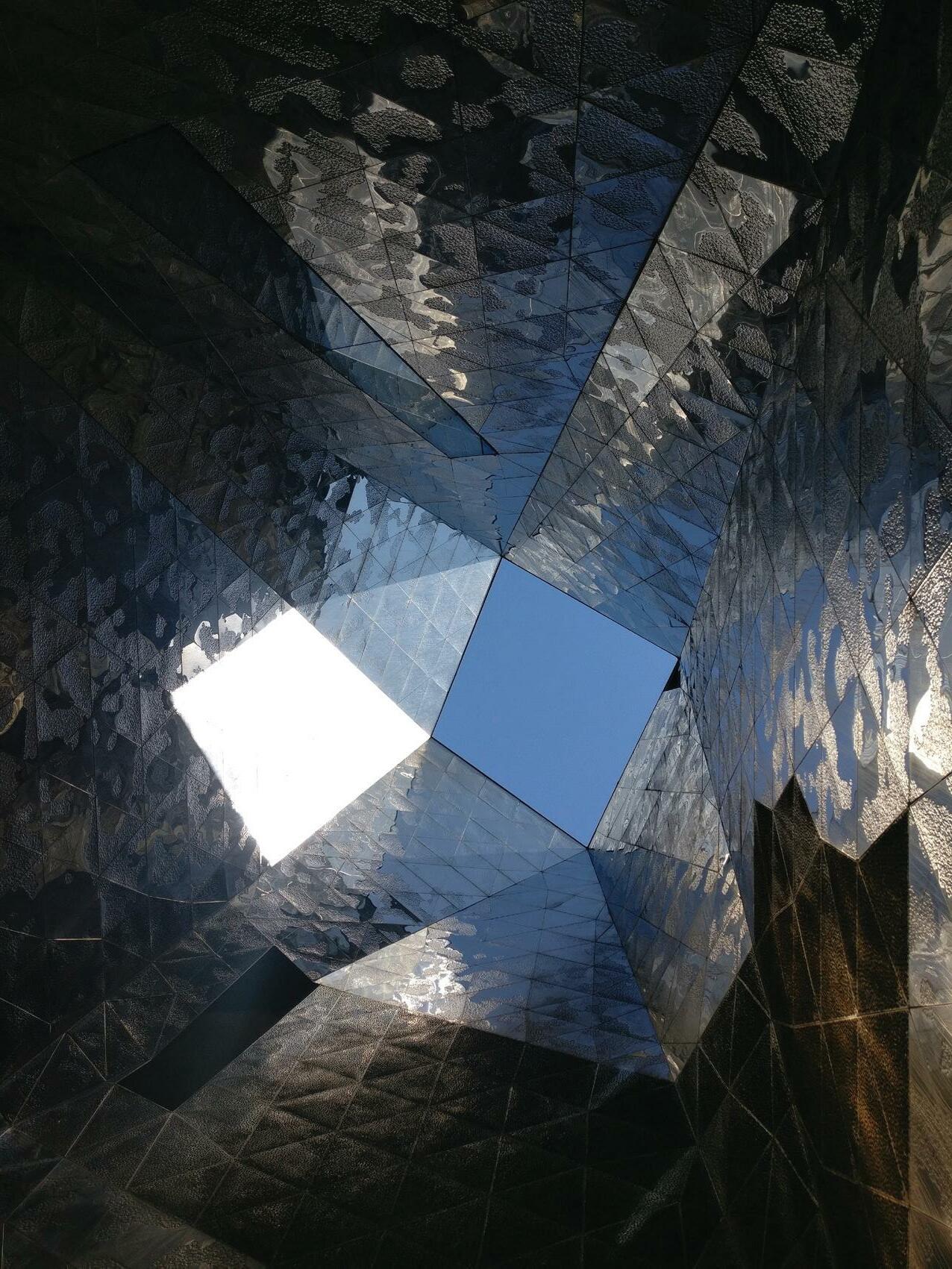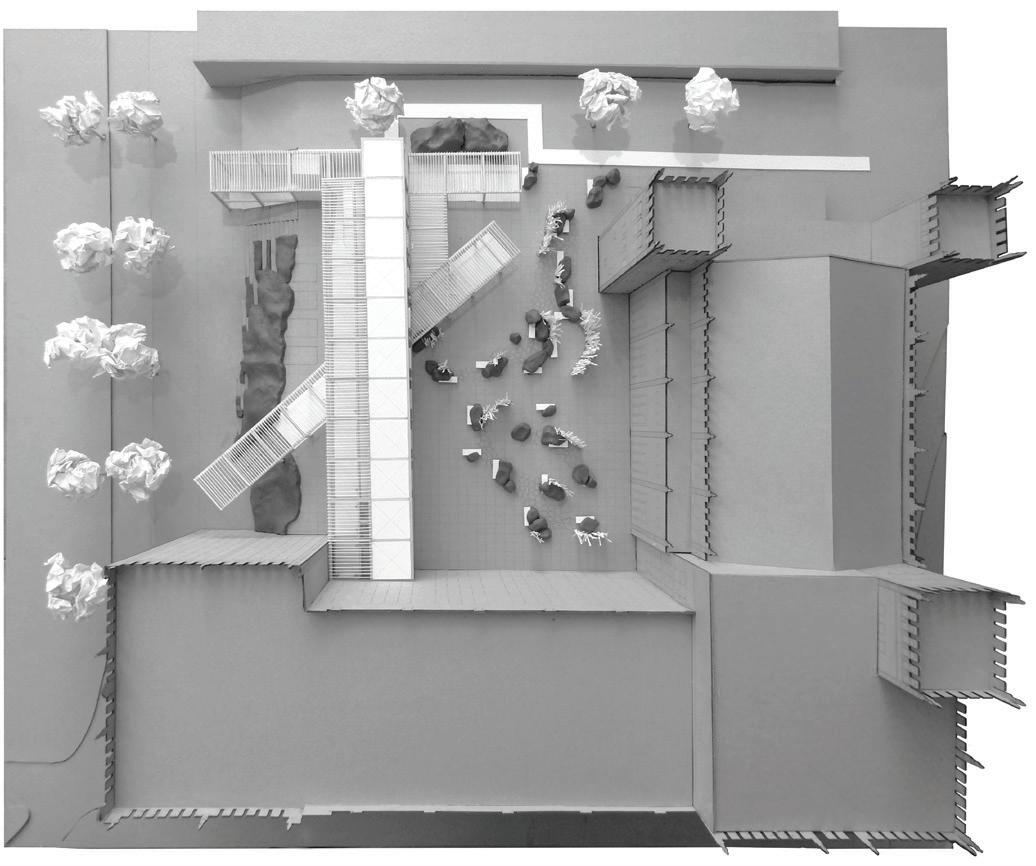
4 minute read
SCHOOL EXTENSION Best 3rd Year Student Award
from Select Works
Partner: Jack Wong
Philip Randolph High school is situated in the City College campus in New York City. The high school suffers from poor graduation and postgraduation statistics for its students. Students frequently cut class and can be seen wandering the streets around campus during the day. Thus there is a need for improvement within the school’s academic culture. Students generally seem to be unconvinced by the educational system that they are required to attend. Ironically the bureaucratic nature of the public school system further alienates the students from their education, as they are compartmentalized in classrooms they see as cells and subsequently seek to avoid or disregard the system they are placed in. The objective of this project is to provide an extension to the existing school within the elevated parking lot of the school with an emphasis on prefab construction. It consists of new classrooms, exhibition space, indoor and outdoor resting and eating areas.
Advertisement
A school inherently denotes a place of learning and interaction. Given the notion of prefab construction, the structural system of the building is expressed through a modular metric, while naturalistic elements are woven into the site to provide for phenomenological and experiential continuity. These two systems, the articulated grid and the curvilinear vector, clash to provide for a healthy academic space for students.
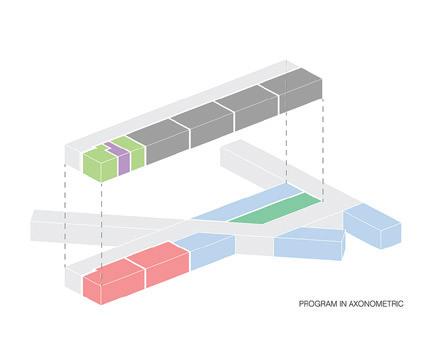
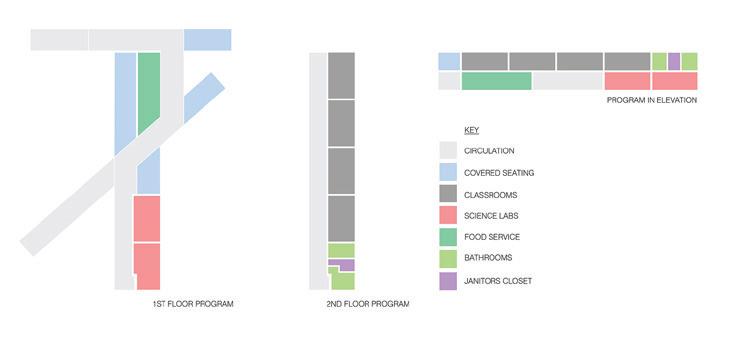
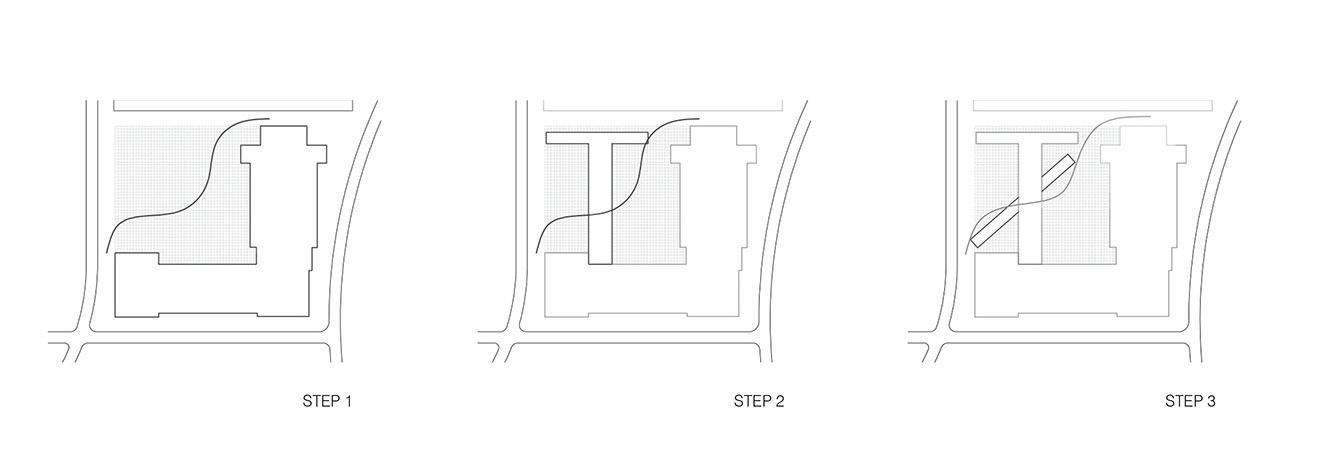
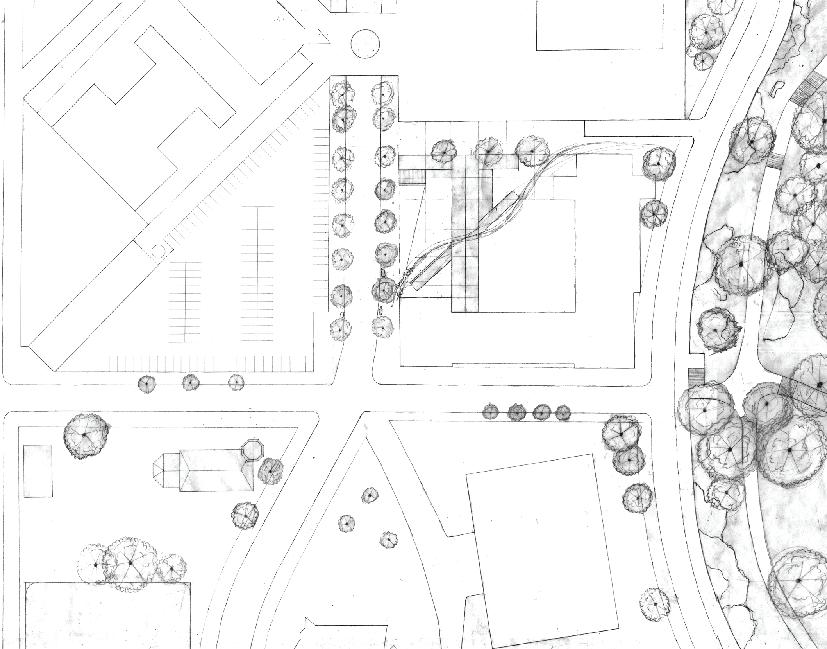


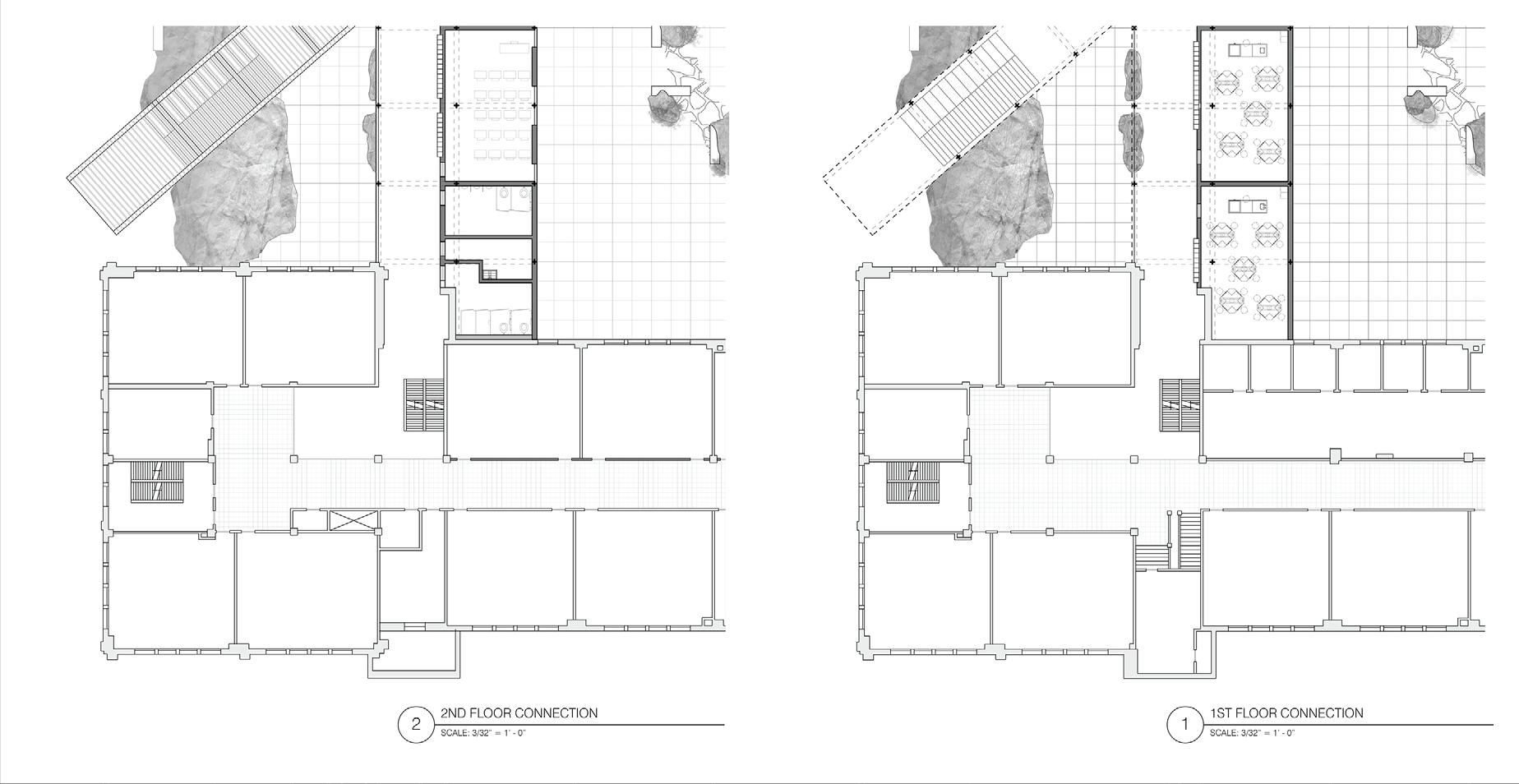
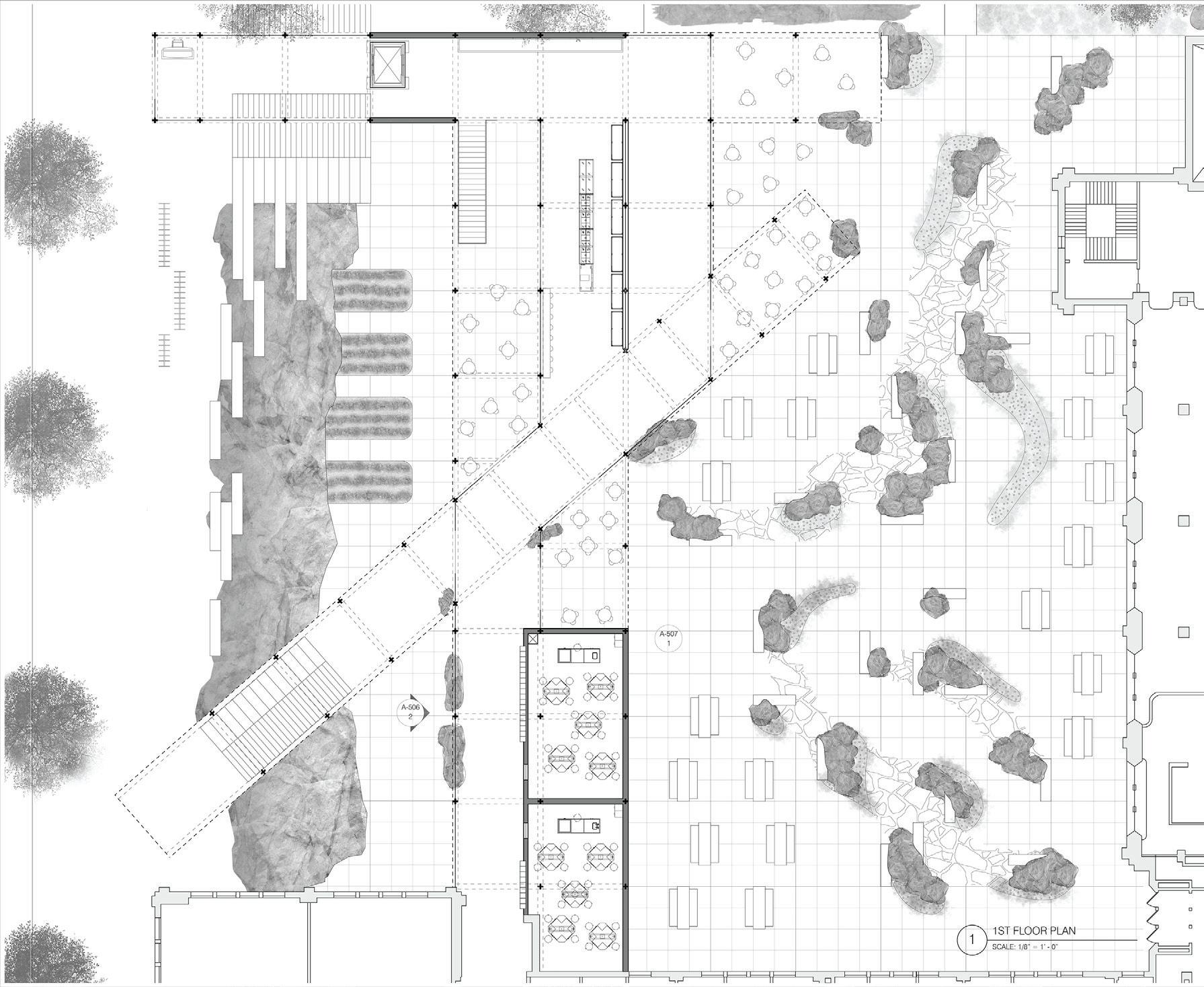



PROPRIETARY INTERIOR
2' x 4' STOPANEL. WHITE
SEMI-GLOSS POWDER COAT
FINISH. INTALLATION TO FOLLOW STOCORP SPEC.
TATE INTERIOR SMOOTH POLISH FINISH CONCRETE TILE 2' x 4' TYP.
RECESSED LINEAR RUN FLUORESCENT FIXTURE WITH CYLINDRICAL ACRYLIC DIFFUSER. SEE LIGHTING DWG'S FOR DETAILS.
PROPRIETARY STOPANEL HIDDEN RECESSED JOINT. INSTALTION TO FOLLOW STOCORP SPEC.
REBAR ANCHOR APPROVED BY STONE SMITHS AND ENGINEER.
CAULKING (TYPE TO BE APPROVED BY ENGINEER)
POLISHED CONCRETE BENCH. SEE STONEWORK SCHEDULE FOR PLACEMENT DETAILS.
PROVIDE 1 1" LIP FOR
S.S. PLANTER OVER FLOOR SYSTEM HEIGHT.
BAMBOO (SEE LANDSCAPE ARCHITECT DWG'S)
GRAVEL (SEE LANDSCAPE ARCHITECT DWG'S)
LANDSCAPE CLOTH (SEE LANDSCAPE ARCHITECT DWG'S)
PROVIDE WEEP HOLES FOR ADEQUATE DRAINAGE.
SEE SPEC FOR GROUND MOUNTING FOR TATE EXTERIOR FRAMING SYSTEM.
JOINT OF BEAM EXPRESSED THOUGH FLOORING
COLUMN ROTATES 41°, FLOOR AND CEILING CUTOUT TO MATCH ANGLE OF COLUMN. SEE STRUTURAL DWG'S FOR DETAILS.
KEEP UNIFORM 2" SPACING BETWEEN PANELS (TYP.)
TATE INTERIOR SMOOTH POLISH FINISH CONCRETE TILE 2' x 4' TYP.
KAWNEER MULLION TO BE INSPECTED PRIOR TO STONE PLACEMENT.
PROPRIETARY INTERIOR 4' x 4' STOPANEL. WHITE SEMI-GLOSS POWDER COAT FINISH. INTALLATION TO FOLLOW STOCORP SPEC.
MEP RUN FROM BASEMENT. SEE MEP DWG'S FOR SPECIFIC RUN.
PROPRIETARY STOPANEL HIDDEN RECESSED JOINT. INSTALTION TO FOLLOW STOCORP SPEC.
STOPANEL TO WRAP AROUND CORNER SEAMLESSLY.
STEEL INTERFACE CONNECTIONS. SEE A-XXX FOR DETAILS.
WIPE BOARD BY OTHERS. SEE INTERIOR ELVEATIONS.
PROPRIETARY INTERIOR 2' x 4' STOPANEL. WHITE SEMI-GLOSS POWDER COAT FINISH. INTALLATION TO FOLLOW STOCORP SPEC.
HVAC PANELIZED COVE. SEE ALL NOTES ON INTERIOR ELEVATIONS.
HVAC SUPPLY AND RETURN LINES AND DIMENSIONS TO BE CONFIRMED WITH ENGINEER.
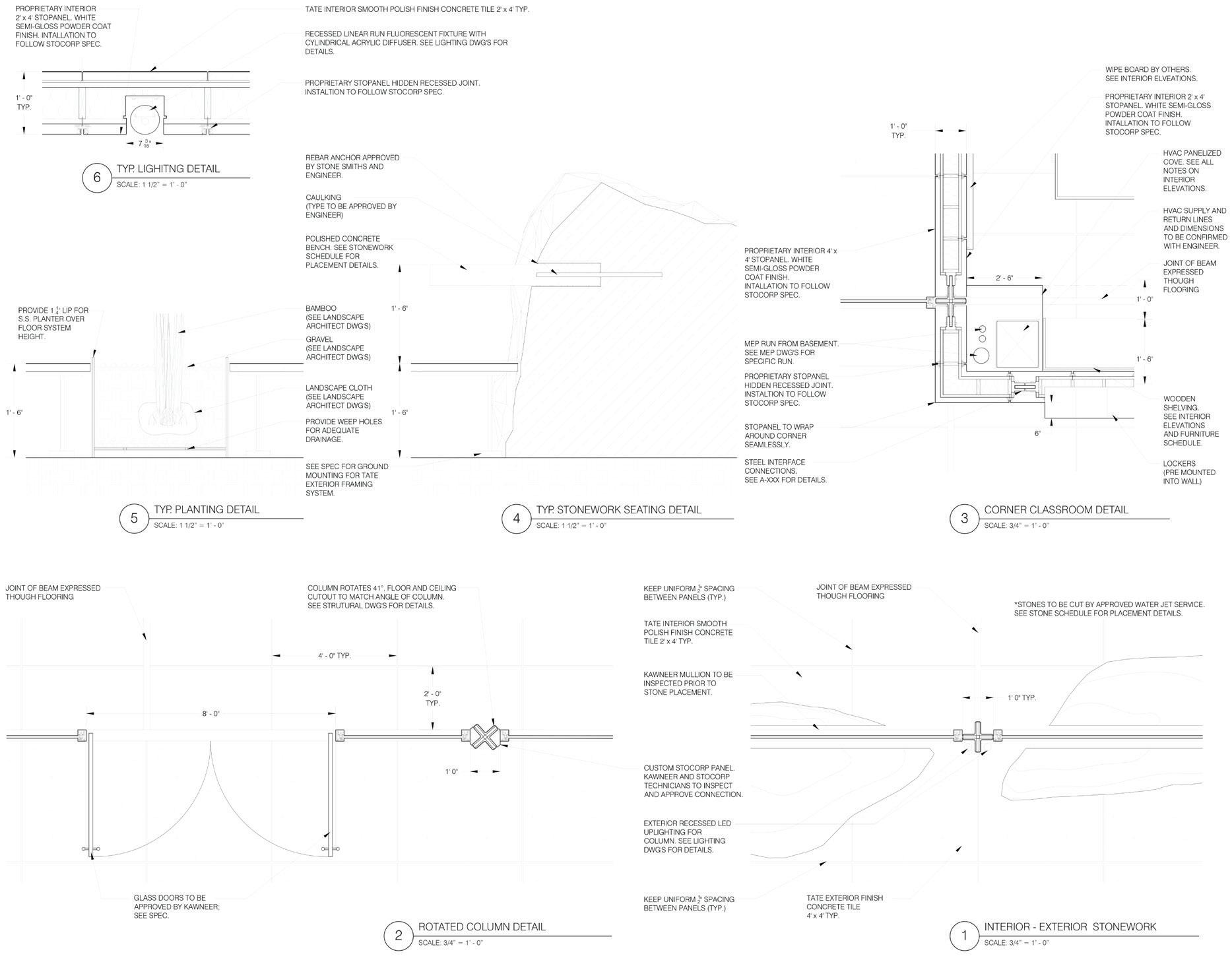
JOINT OF BEAM EXPRESSED THOUGH FLOORING
JOINT OF BEAM EXPRESSED THOUGH FLOORING
WOODEN SHELVING. SEE INTERIOR ELEVATIONS AND FURNITURE SCHEDULE.
LOCKERS (PRE MOUNTED INTO WALL)
*STONES TO BE CUT BY APPROVED WATER JET SERVICE. SEE STONE SCHEDULE FOR PLACEMENT DETAILS.
CUSTOM STOCORP PANEL. KAWNEER AND STOCORP TECHNICIANS TO INSPECT AND APPROVE CONNECTION.
EXTERIOR RECESSED LED UPLIGHTING FOR COLUMN. SEE LIGHTING DWG'S FOR DETAILS.
GLASS DOORS TO BE APPROVED BY KAWNEER; SEE SPEC.
KEEP UNIFORM 2" SPACING BETWEEN PANELS (TYP.)
TATE EXTERIOR FINISH CONCRETE TILE 4' x 4' TYP.
1' 0" TYP.
Project:
M540, MANHATTAN A. PHILIP RANDOLPH HIGH SCHOOL ADDITION
Address:

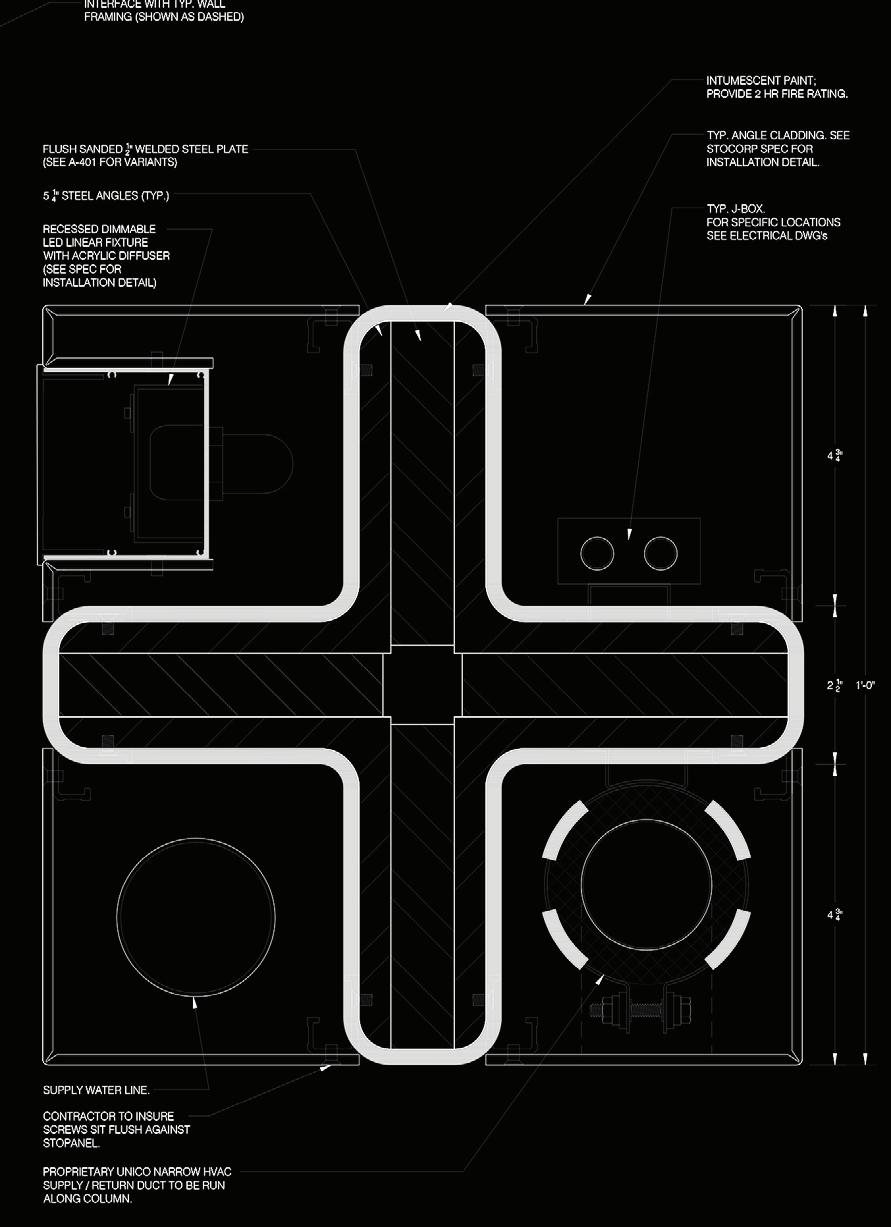
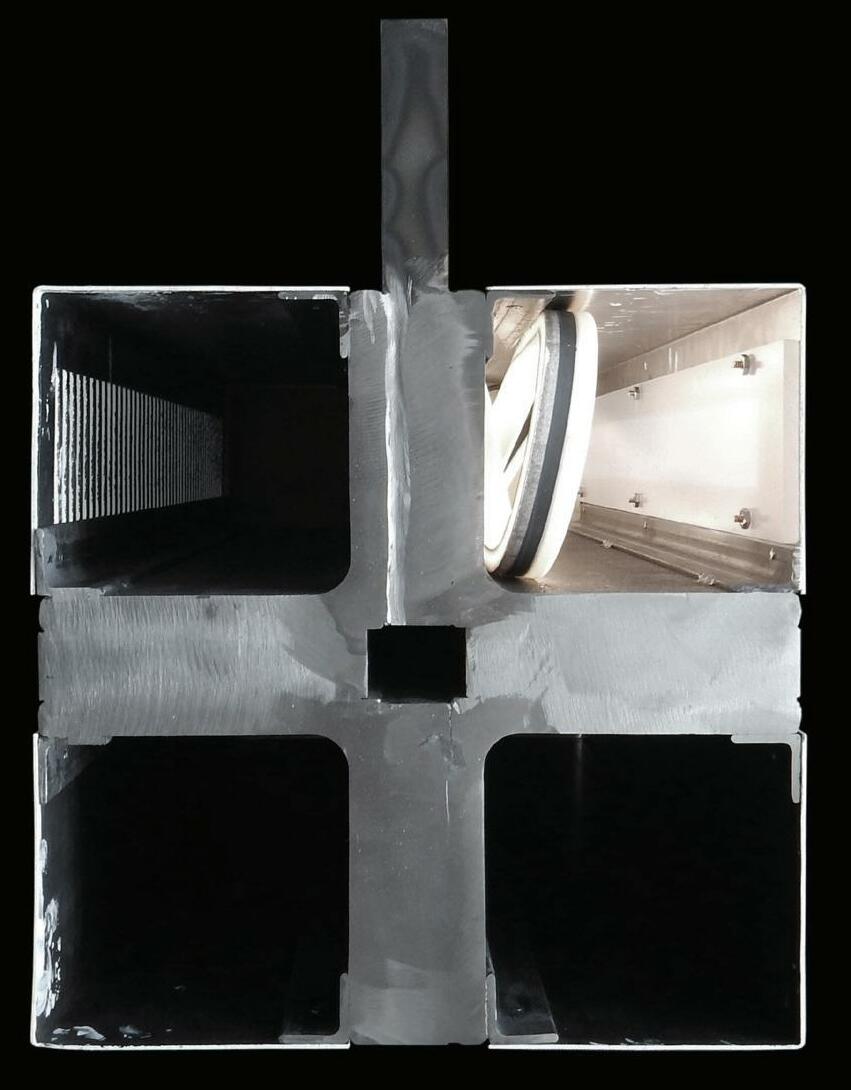





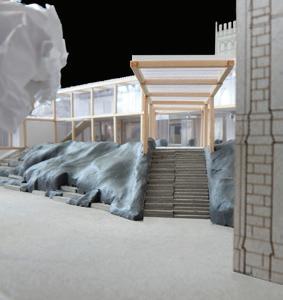
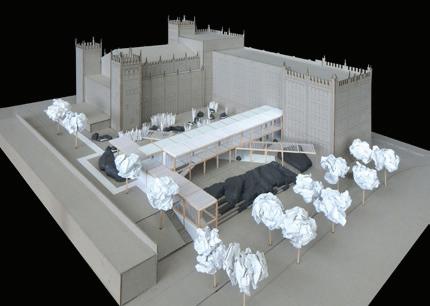
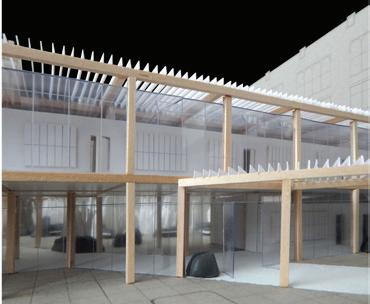

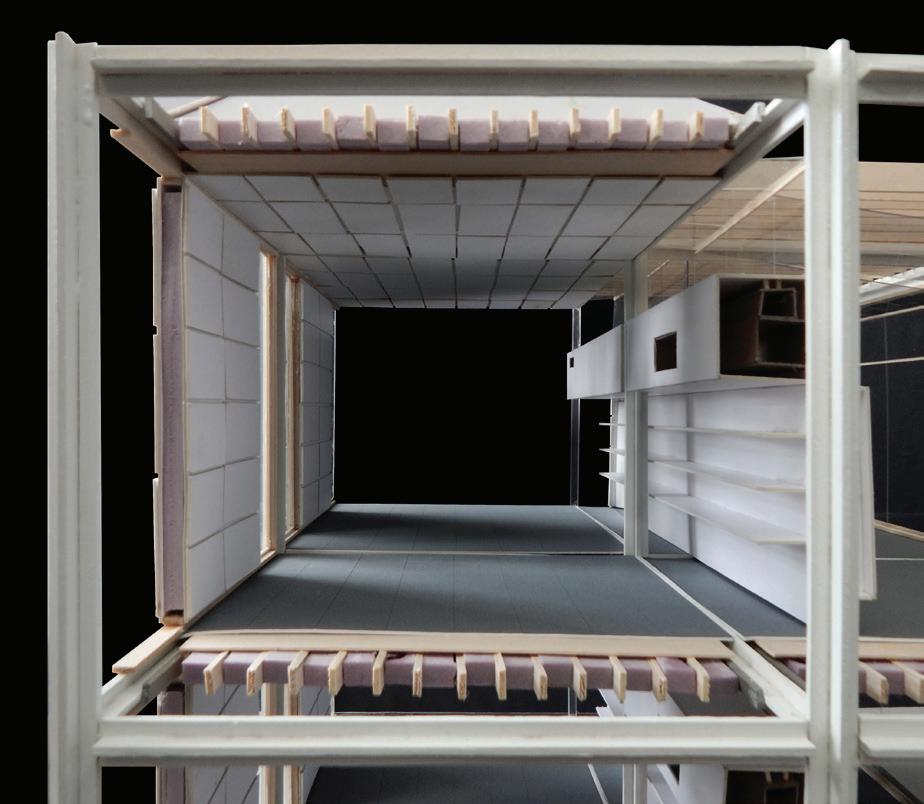
Structure Through Light
Partner: Victoria Graziano
With the express intention to explore materiality and its variant potentials, this project examined the material of concrete through the inductive process of experimentation.
With the intention of introducing the property of light as an element into the composition of concrete, both plastic and glass were used in a series of experiments to determine both the structural and phenomenological qualities of this new composite. In the end, the integration of a structural plastic lattice with concrete proved to be ideal as light was transmitted through the material itself, and the structural integrity of the composite greatly increased.
The construction of a light object demonstrates the qualities and potentials of the new composite. The piece itself expresses the intention to domesticate the industrial, To make the heavy light, and to allow the concrete to re-materialize.
PLEXI STRIPS ASSEMBLED IN A MULTI-LAYERED LATTICE FORMATION
LATTICE FORMATION FUSED WITH HEAT AND MOLDED TO TAKE PROPER ‘WAVE’ FORM WITH THE USE OF A HEAT GUN
FUSED PLEXI LATTICE NOW SERVES AS STRUCTURAL COMPONENT OF NEW COMPOSITE MATERIAL PLYWOOD FORM WORK CONSTRUCTED
STRUCTURAL LATTICE CURVED WITH HEAT AND INSERTED INTO FORM WORK
CONCRETE MIX INSERTED INTO FORM WORK WITH STRUCTURAL LATTICE
PLEXI STRIPS LAYERED & FUSED TOGETHER WITH HEAT
FUSED PLEXI AGGREGATE INSERTED IN CONCRETE MIX, ONCE CURED , SURFACE GRINDED AWAY TO REVEAL INTERIOR PLEXI STRUCTURE
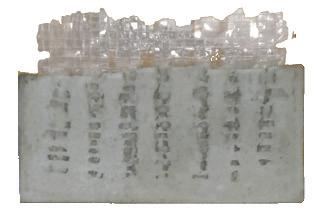



PLEXI STRIPS ASSEMBLED IN A MULTILAYERED LATTICE FORMATION
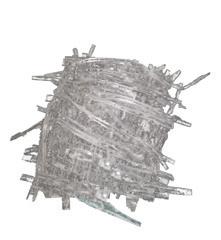
PREFERED STRUCTURAL FORM
MULTILAYERED LATTICE FORMED INTO ‘WAVE’ FORM FINAL PRODUCT
REMOVE FORM WORK, GRIND SURFACE OF NEW COMPOSITE MATERIAL
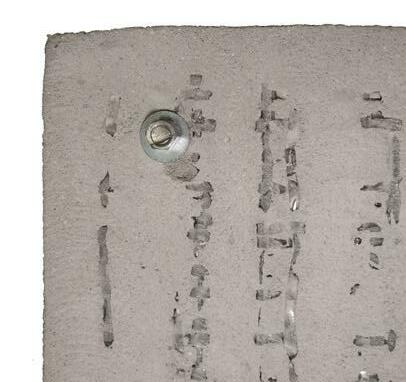

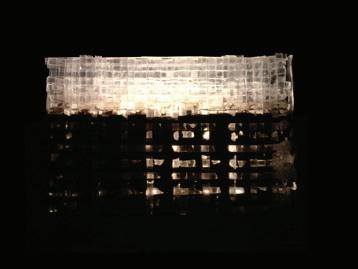


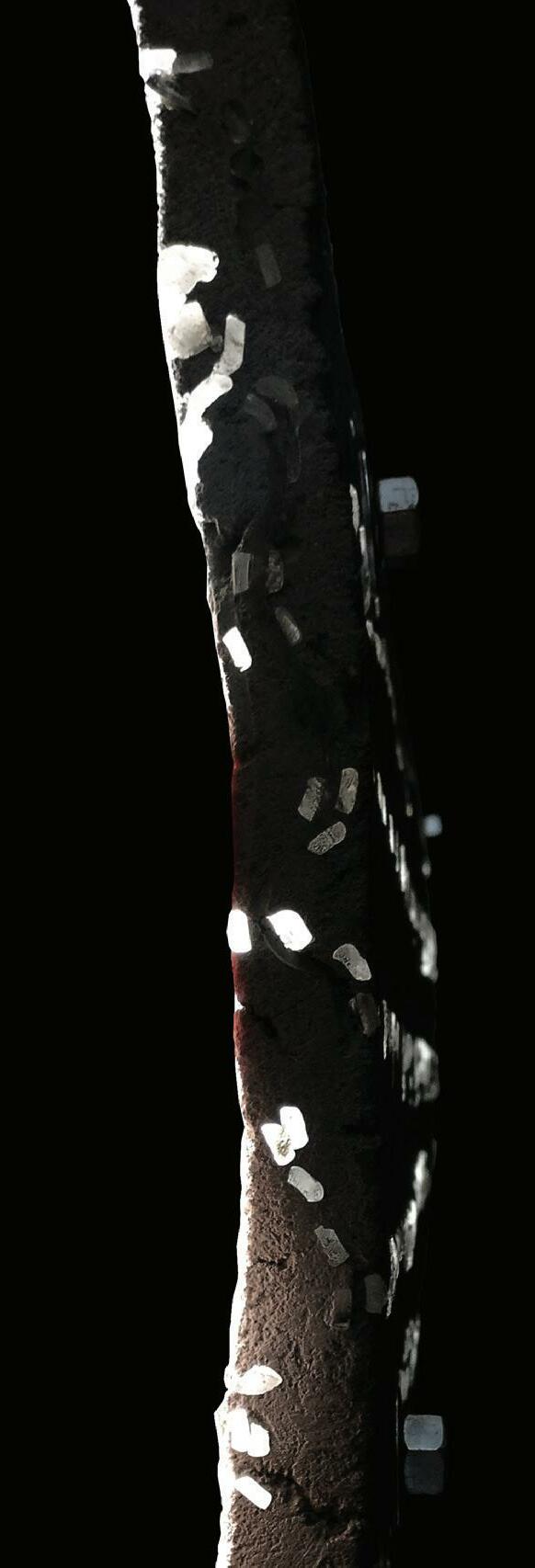
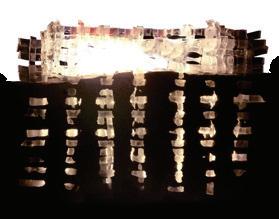
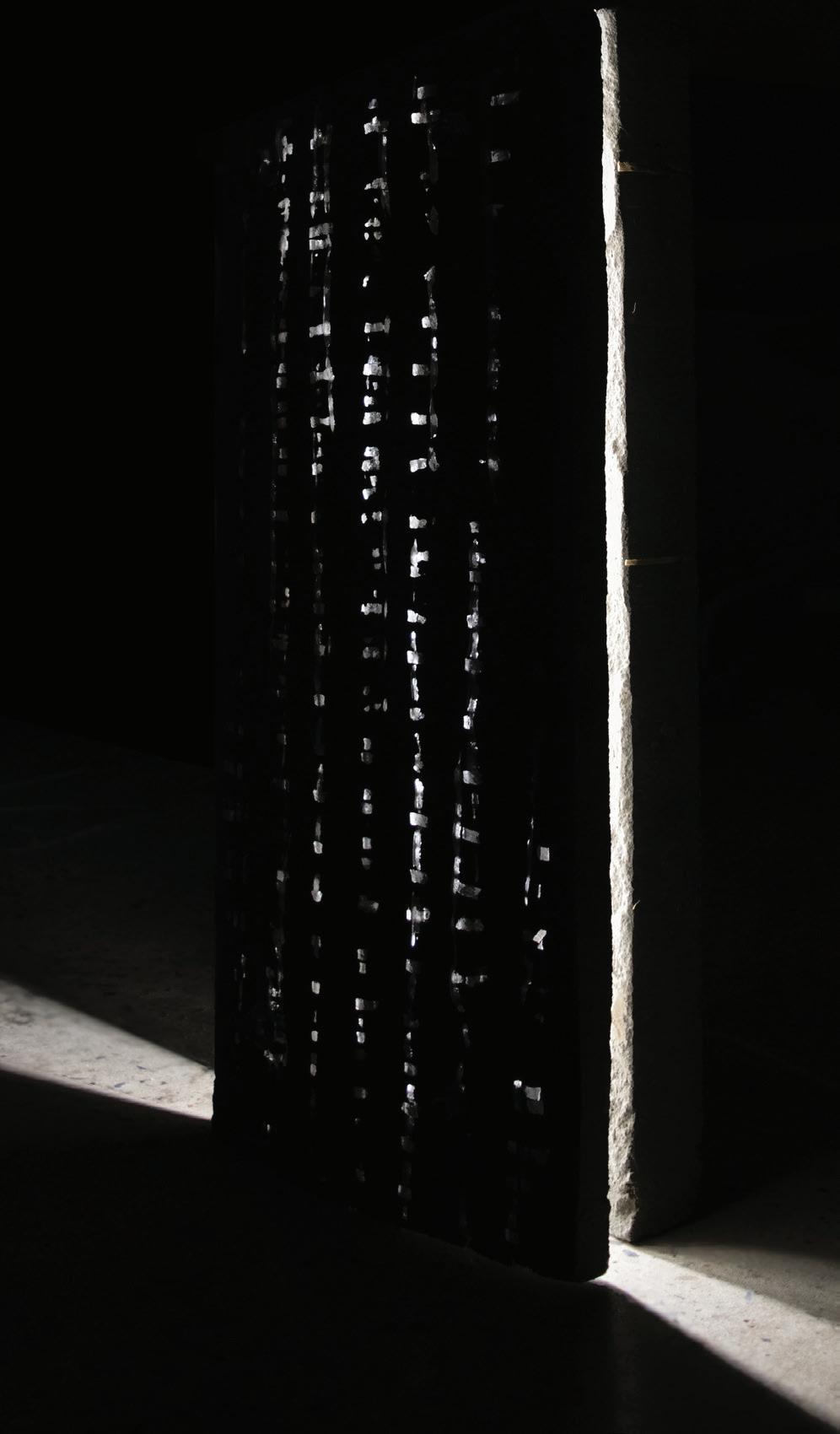
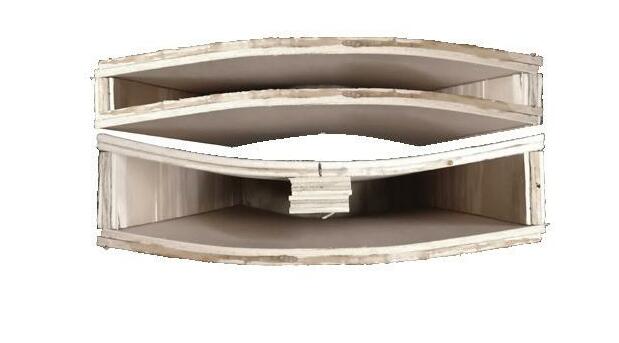
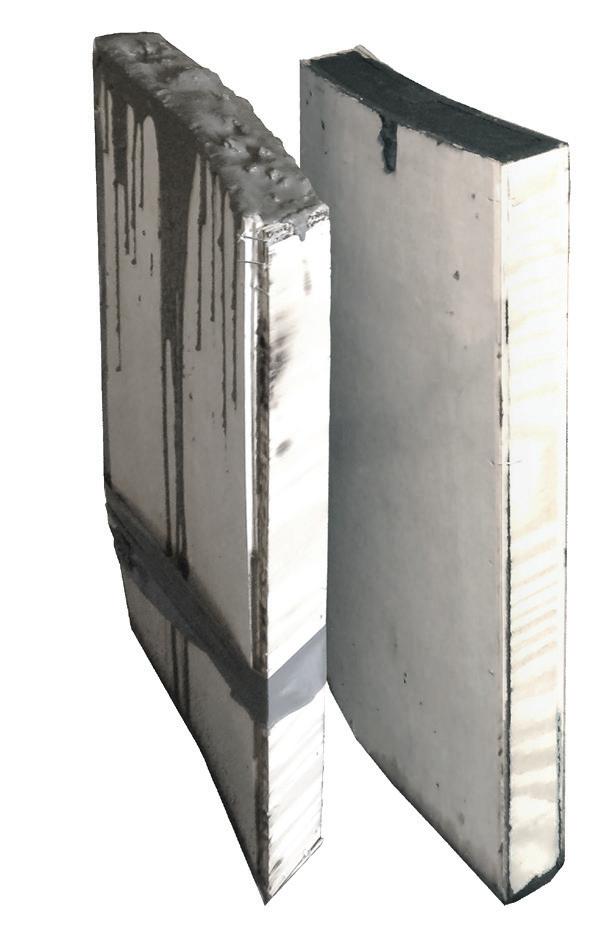
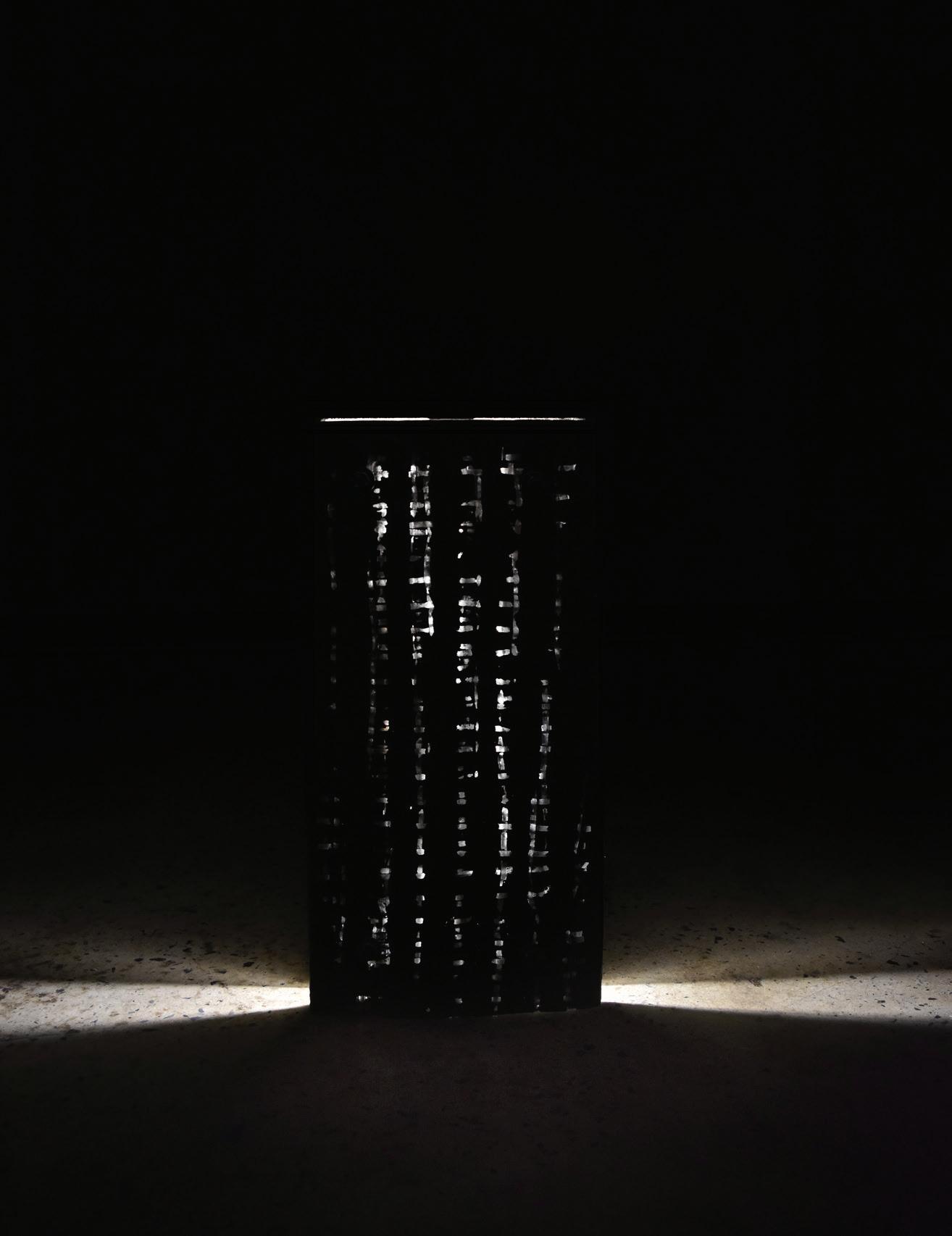
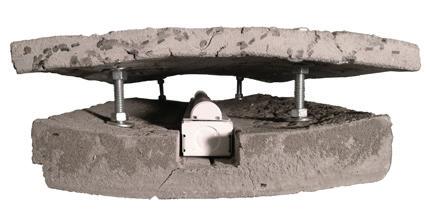
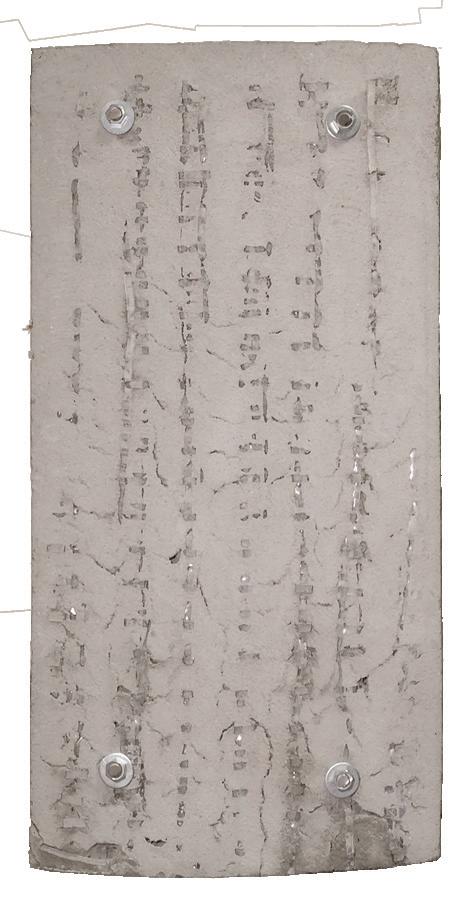
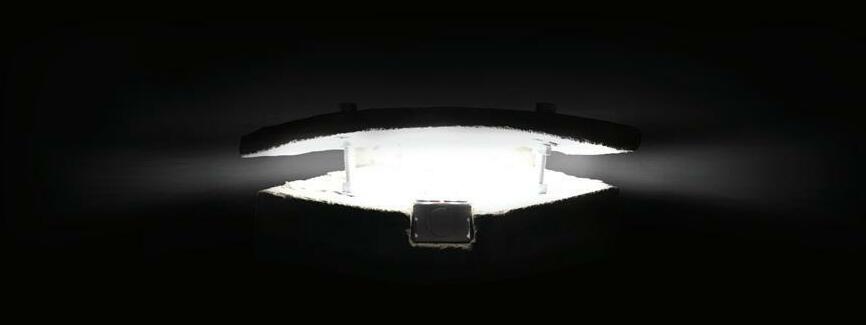
Light As Structure
Partner: Victoria Graziano
This centerpiece object is a chandelier that provides both direct localized light and diffused atmospheric light. Composed of three vertical planes held together by dispersed illuminated acrylic rods, the object is an experiential light source. The simple combination of planes, rods, and light, transforms the surrounding space of the chandelier and illuminates the space with sufficient luminous flux. In addition, its soft atmospheric glow changes the experience of the space around the object.
Our design objective was to produce a chandelier that not only lights the space but creates a unique experience of light. It is both a functional object that behaves as a direct light source and also an ornamental piece as it creates an ethereal atmosphere through the diffusion of light.
The conceptual driver for this piece was the idea of light as structure. The light source is hidden at the top of the chandelier and is transmitted through the acrylic rods that hold the piece together. This creates an object where the structure is perceived as light itself.
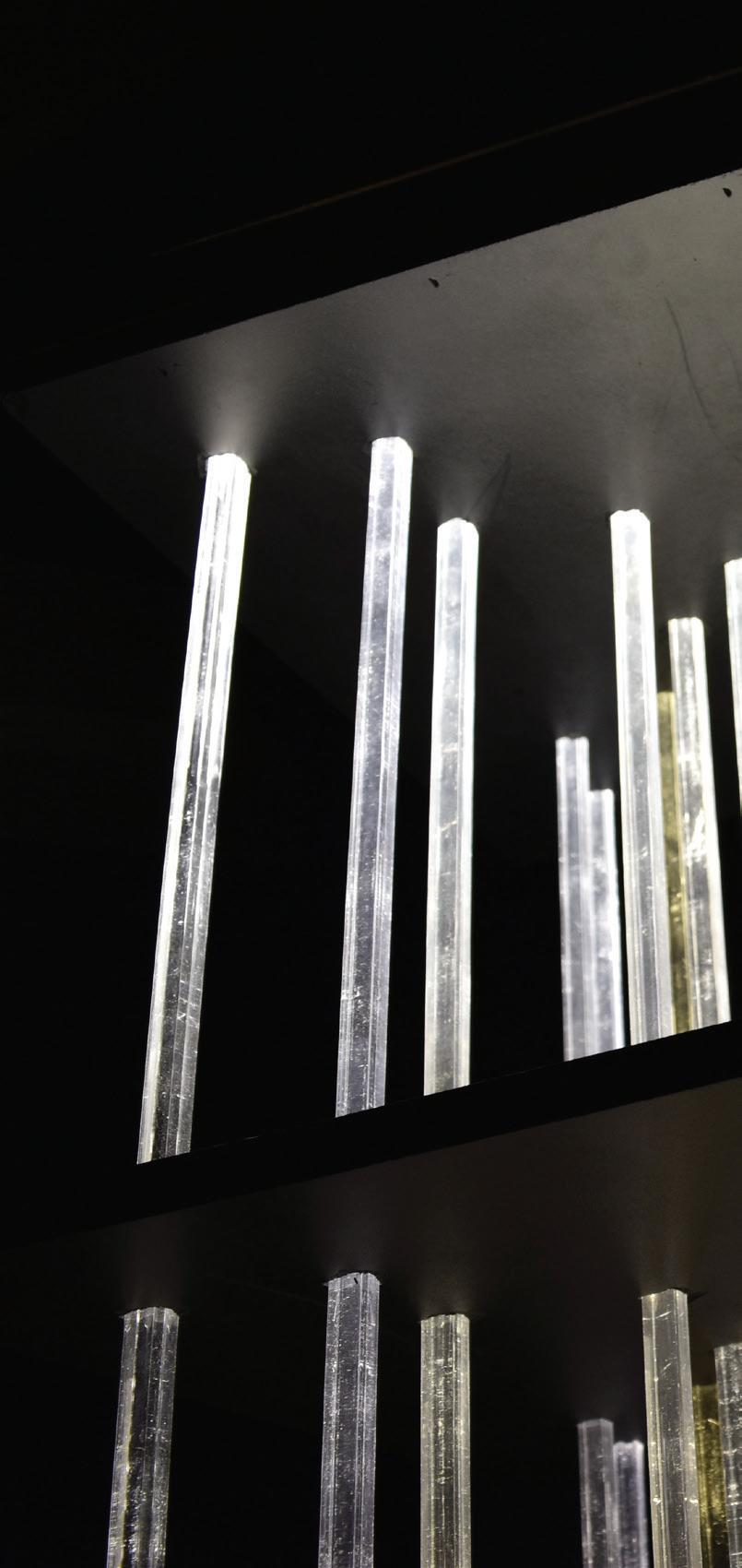
Reality exists within the distance between the subject and the object. These series of images explore subject object relations. The questions of whether the subject is itself another object among objects, or whether the subject holds ontological weight outside the object, are engaged.
Architectural, cultural, psychological, natural, and spiritual space is explored through the lenses of their variant expressions. Symbolism as an activator of meaning is understood as a dimension that informs and enriches the various types of spaces we simultaneously occupy.
Through the image, these many spaces are rendered unto one and we are allowed to intuitively comprehend them without technical understanding of their nature. The following photographs seek to elicit a more particular understanding of the themes at hand.

